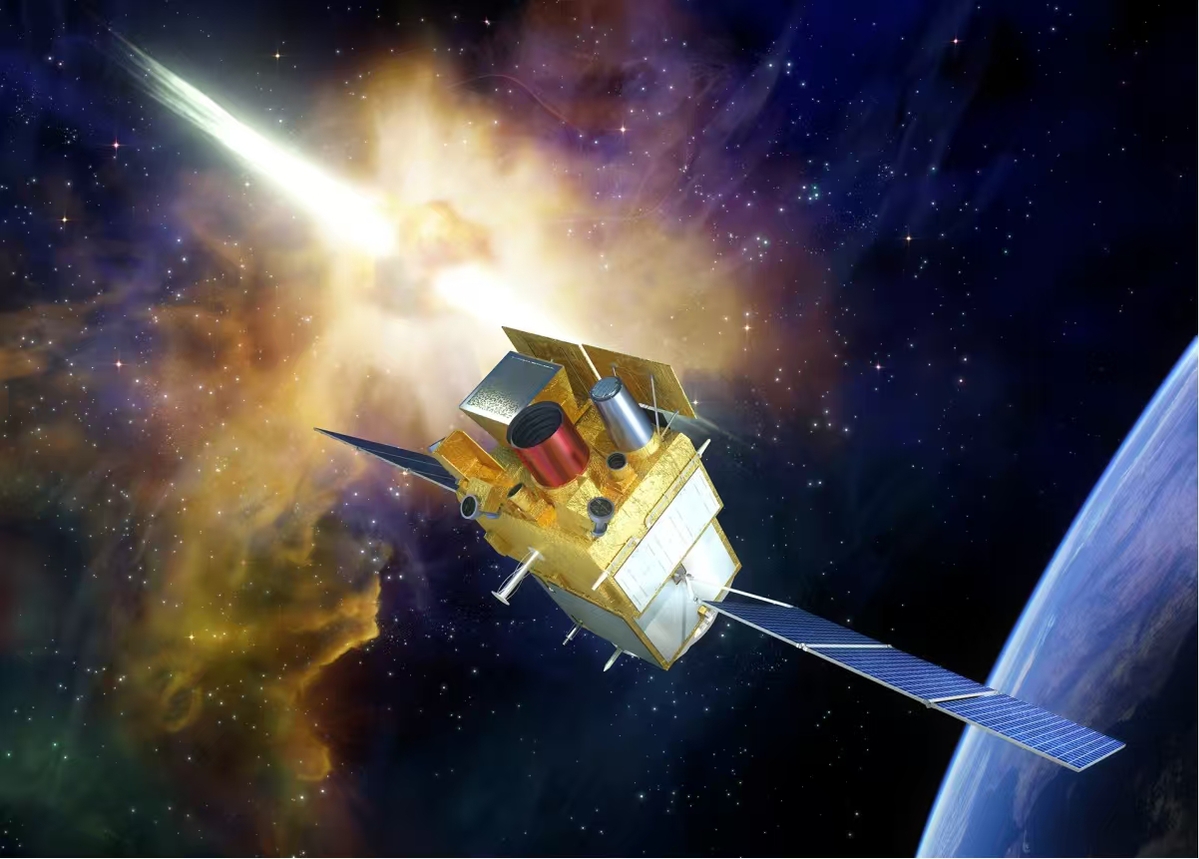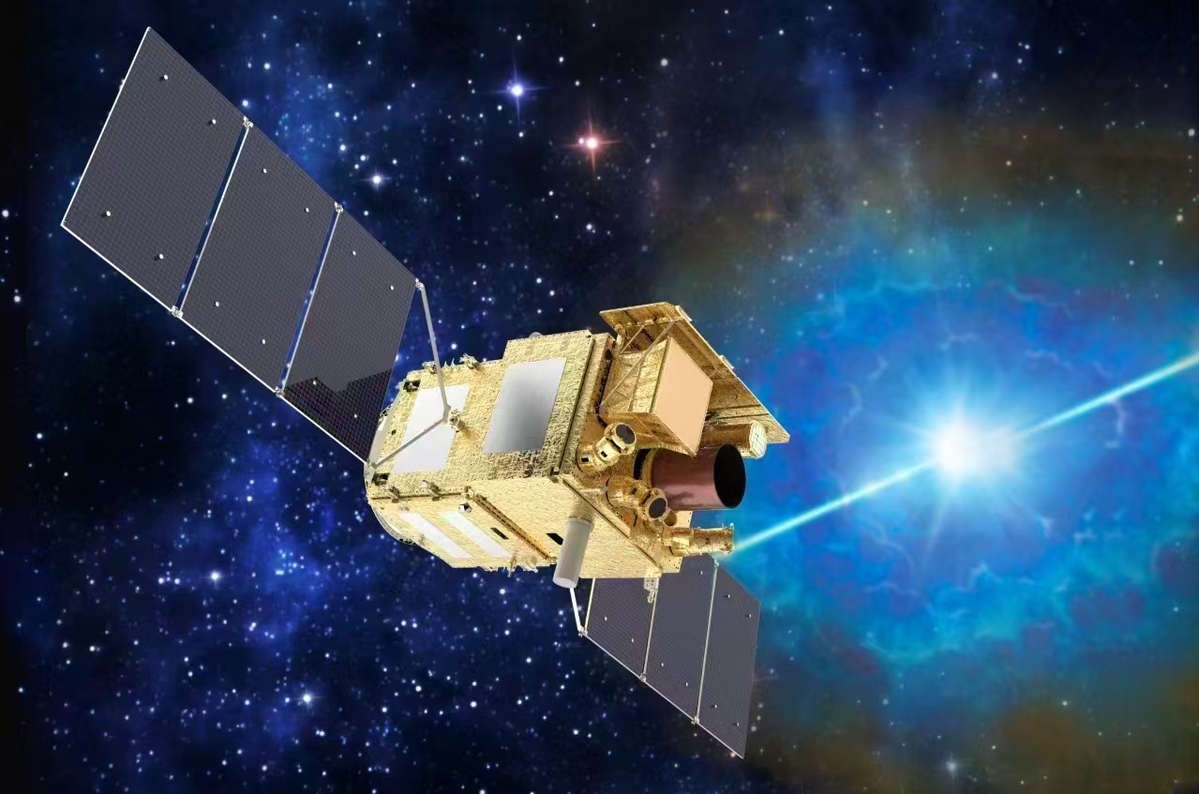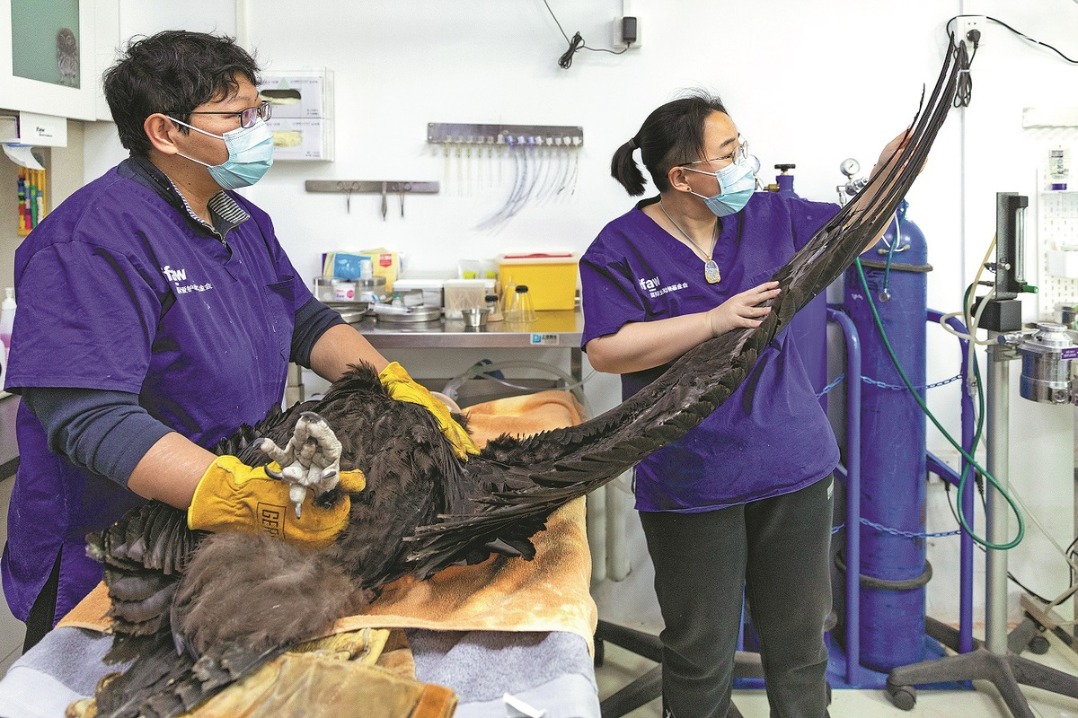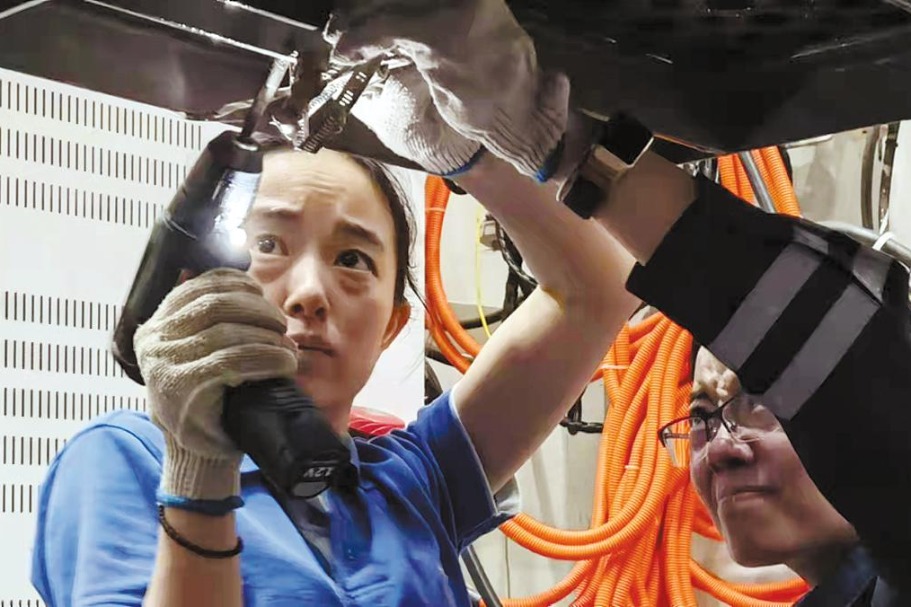Astronomical satellite unveils groundbreaking discoveries


The Space-based multi-band Variable Object Monitor (SVOM), a cutting-edge astronomical satellite jointly developed by Chinese and French scientists to capture and observe the most distant explosions of stars known as gamma-ray bursts (GRBs), has astounded the scientific community with its groundbreaking discoveries after a mere 10 months in orbit.
Unveiling its initial scientific achievements during the 10th "Space Day of China" celebration in Shanghai, the SVOM project has marked a significant leap forward in the study of gamma-ray bursts, which are considered the most violent explosive phenomena in the universe following the Big Bang. These phenomena occur during the collapse of massive stars or the merging of binary compact stars, such as neutron stars and black holes.
Since its launch into space on June 22, 2024, as a result of nearly two decades of collaboration between Chinese and French scientists, the SVOM satellite has detected over 100 gamma-ray bursts, showcasing its prowess as the most powerful "gamma-ray burst catcher" globally.
Among these discoveries, one standout finding is the capture of a gamma-ray burst, GRB250314A, originating from the universe's early epoch just 730 million years after its inception, about 13 billion years ago. Scientists speculate that this burst may have originated from the collapse of the earliest stars into black holes or neutron stars, shedding light on the universe's infancy.
Additionally, the observation of gamma-ray burst GRB 241105A has set a new record for the farthest observation of a short-duration gamma-ray burst by humans, further emphasizing the satellite's remarkable capabilities.
"These discoveries not only affirm the exceptional performance of the satellite but also offer a fresh perspective on the exploration of cutting-edge topics such as the formation of early stars and the genesis of black holes," said Wei Jianyan, the principle investigator from the Chinese side and a researcher at the National Astronomical Observatories of the Chinese Academy of Sciences (CAS).
"Through SVOM's detections, scientists have identified several unprecedented types of gamma-ray bursts, challenging established models and theories in the realm of gamma-ray burst physics," Wei added.
Bertrand Cordier, the principle investigator from the French side, highlighted the satellite's exceptional sensitivity to previously elusive rich X-ray GRBs, expanding the horizons of exploration in this domain.

The SVOM project, initiated in 2005 through a collaboration between the China National Space Administration and France's National Center for Space Studies, has brought together scientists and engineers from esteemed institutions such as the Research Institute in Astrophysics and Planetology in Toulouse, France, and the Institute of High Energy Physics in Beijing.
Weighing 930 kilograms, the SVOM satellite, crafted by the CAS' Innovation Academy for Microsatellites in Shanghai, accommodates four scientific payloads designed by both French and Chinese teams.
Zhang Yonghe, the overall commander of SVOM and a researcher at CAS' Innovation Academy for Microsatellites, emphasized the satellite's role as the centerpiece of a sophisticated, swift, and efficient observation system connected with over 40 ground communication stations, enabling rapid global coordination for space and ground-based observations within a response time of under 10 minutes once a target is pinpointed.
"The system can relay observation commands to SVOM in the time it takes to enjoy a cup of coffee," Zhang said.
With an operational lifespan of at least three years, the SVOM satellite is poised to usher in a new era of high-energy astrophysics research. It is anticipated to unravel the mysteries surrounding the formation and demise processes of first-generation stars, investigate the mechanisms behind black hole births, discover electromagnetic counterparts to gravitational wave events, and refine theories concerning early cosmic evolution.
"We feel much empowered with the deployment of SVOM and expect exciting findings by the satellite in its ensuing operations," said Liu Jifeng, director of CAS' National Astronomical Observatories (NAOC), as SVOM was officially delivered to NAOC on April 23, marking a significant milestone in the project's journey toward unlocking the secrets of the universe.
- Beijing courts increase use of punitive damages in IP cases
- Chinese and other global scientists jointly solve genetics mystery of Mendel's peas
- PLA follows and monitors US warship transiting Taiwan Strait
- China's State Council appoints new officials
- Wuzhen TCM conference unveils 2025 innovative global research
- PepsiCo unveils 10 startup finalists for the third edition of its Greenhouse Accelerator Program






































